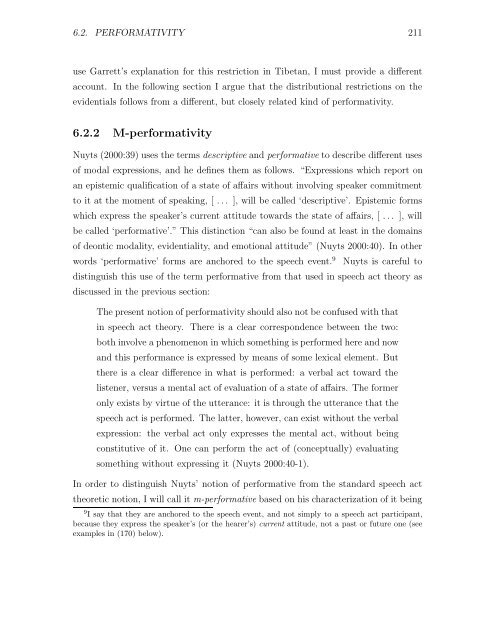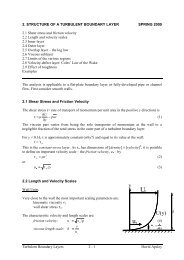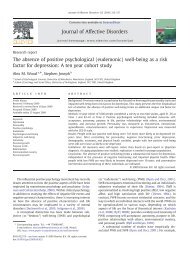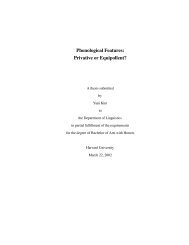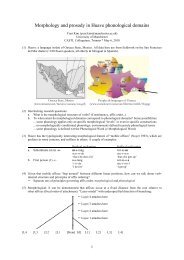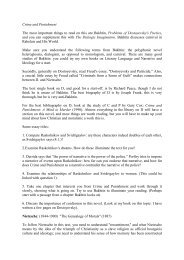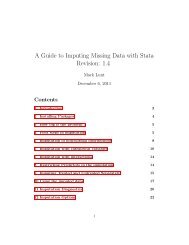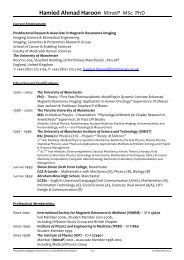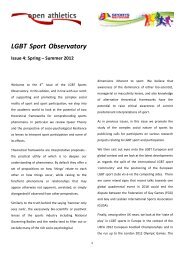semantics and pragmatics of evidentials in cuzco quechua
semantics and pragmatics of evidentials in cuzco quechua
semantics and pragmatics of evidentials in cuzco quechua
You also want an ePaper? Increase the reach of your titles
YUMPU automatically turns print PDFs into web optimized ePapers that Google loves.
6.2. PERFORMATIVITY 211<br />
use Garrett’s explanation for this restriction <strong>in</strong> Tibetan, I must provide a different<br />
account. In the follow<strong>in</strong>g section I argue that the distributional restrictions on the<br />
<strong>evidentials</strong> follows from a different, but closely related k<strong>in</strong>d <strong>of</strong> performativity.<br />
6.2.2 M-performativity<br />
Nuyts (2000:39) uses the terms descriptive <strong>and</strong> performative to describe different uses<br />
<strong>of</strong> modal expressions, <strong>and</strong> he def<strong>in</strong>es them as follows. “Expressions which report on<br />
an epistemic qualification <strong>of</strong> a state <strong>of</strong> affairs without <strong>in</strong>volv<strong>in</strong>g speaker commitment<br />
to it at the moment <strong>of</strong> speak<strong>in</strong>g, [ ... ], will be called ‘descriptive’. Epistemic forms<br />
which express the speaker’s current attitude towards the state <strong>of</strong> affairs, [ ... ], will<br />
be called ‘performative’.” This dist<strong>in</strong>ction “can also be found at least <strong>in</strong> the doma<strong>in</strong>s<br />
<strong>of</strong> deontic modality, evidentiality, <strong>and</strong> emotional attitude” (Nuyts 2000:40). In other<br />
words ‘performative’ forms are anchored to the speech event. 9 Nuytsiscarefulto<br />
dist<strong>in</strong>guish this use <strong>of</strong> the term performative from that used <strong>in</strong> speech act theory as<br />
discussed <strong>in</strong> the previous section:<br />
The present notion <strong>of</strong> performativity should also not be confused with that<br />
<strong>in</strong> speech act theory. There is a clear correspondence between the two:<br />
both <strong>in</strong>volve a phenomenon <strong>in</strong> which someth<strong>in</strong>g is performed here <strong>and</strong> now<br />
<strong>and</strong> this performance is expressed by means <strong>of</strong> some lexical element. But<br />
there is a clear difference <strong>in</strong> what is performed: a verbal act toward the<br />
listener, versus a mental act <strong>of</strong> evaluation <strong>of</strong> a state <strong>of</strong> affairs. The former<br />
only exists by virtue <strong>of</strong> the utterance: it is through the utterance that the<br />
speech act is performed. The latter, however, can exist without the verbal<br />
expression: the verbal act only expresses the mental act, without be<strong>in</strong>g<br />
constitutive <strong>of</strong> it. One can perform the act <strong>of</strong> (conceptually) evaluat<strong>in</strong>g<br />
someth<strong>in</strong>g without express<strong>in</strong>g it (Nuyts 2000:40-1).<br />
In order to dist<strong>in</strong>guish Nuyts’ notion <strong>of</strong> performative from the st<strong>and</strong>ard speech act<br />
theoretic notion, I will call it m-performative based on his characterization <strong>of</strong> it be<strong>in</strong>g<br />
9 I say that they are anchored to the speech event, <strong>and</strong> not simply to a speech act participant,<br />
because they express the speaker’s (or the hearer’s) current attitude, not a past or future one (see<br />
examples <strong>in</strong> (170) below).


